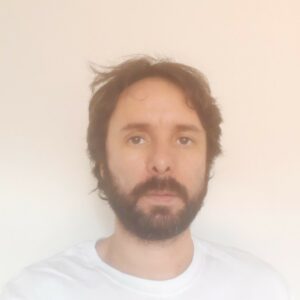
At a glance
| Title | System to assess the vulnerability of satellites in relation to space debris |
| Reference | 2022.15682.UTA |
| Scientific Area | Space-Earth Interactions |
| Funding (US) | 100 000 USD |
| Leading Institutions | Faculty of Sciences, University of Porto, PT
Oden Institute for Computational Engineering and Sciences, USA |
| Duration | 12 months |
| Start date | November 04, 2024 |
| End date | December 31, 2025 |
| Keywords | Light Curve, Photometry, Attitude Determination, Space Object Charactrtization |
What is LAMP-Q about?
This project focuses on improving the understanding of Anthropogenic Space Objects (ASOs) by analyzing their light curves—time series of light intensity measurements. Each ASO has unique physical characteristics, such as size, shape, material properties, and reflectivity (albedo), which influence how it interacts with solar radiation. This interaction, known as solar radiation pressure (SRP), affects the ASO’s momentum and trajectory, crucial for accurate orbit modeling. Current models often oversimplify ASOs as spherical “cannonballs,” assuming even reflection and omitting rotational dynamics, which limits prediction accuracy.
Light curves offer a way to extract ASO-specific details, enabling refined SRP models and better trajectory predictions. By simulating and observing actual ASO light reflections, this project aims to characterize ASOs’ physical properties and attitudes, thus moving beyond orbit-based identification.
What critical challenges is LAMP-Q addressing?
LAMP-Q addresses the uncertainty in modeling Anthropogenic Space Objects (ASOs) by attempting to accurately characterize their unique physical properties—such as shape, material, and reflectivity—through light curve analysis. Current models simplify ASOs as spheres with uniform reflection, disregarding complex rotational dynamics and varying material properties, leading to imprecise predictions of solar radiation pressure (SRP) impacts on their trajectories. The project aims to reduce these inaccuracies by developing techniques to extract ASO-specific data from light curves, improving SRP models, and
enabling ASO identification based on physical attributes rather than solely on orbital predictions.
How will LAMP-Q help modeling ASOs?
The planned approach to the LAMP-Q project involves using light curves to extract ASO-specific properties, such as attitude and material composition, to enhance SRP models. By simulating ASO light reflections and verifying them with real observations, we aim to refine physical property measurements through photon-counting and multispectral sensors. We will apply bidirectional reflectance distribution functions (BRDFs) to model SRP effects more accurately. However, inherent risks include the complexity of isolating distinct ASO reflections in noisy data, the limited accuracy of current sensors, and potential errors in simulating real-world conditions, which may hinder the precise modeling of ASO trajectories and properties.
How is LAMP-Q expected to improve its research area?
This research has game-changing potential by enabling precise ASO tracking, thereby enhancing space situational awareness and minimizing collision risks in increasingly congested orbital environments. By developing methods to identify and model ASOs
based on unique physical properties rather than orbital predictions alone, we can shift toward a proactive, data-driven approach to space traffic management. The results will benefit satellite operators, regulatory agencies, and the commercial space sector by
improving safety and sustainability. Additionally, this work opens new research avenues in photon-based ASO identification, SRP impact modeling, and adaptive orbit determination technologies, fostering innovation in space asset protection and debris mitigation.
Project Team
Allan Kardec de Almeida Junior
Moriba Jah
- Other team members in Portugal: Anna Guerman (University of Beira Interior);
